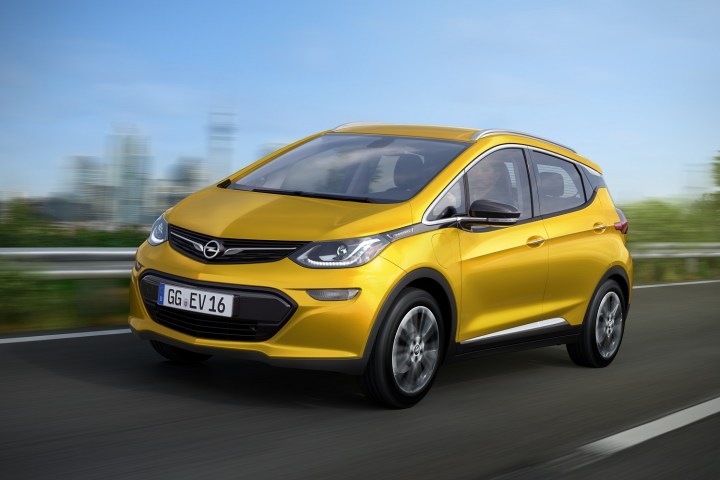
The Ampera-e is one of 29 new or redesigned Opel models that are scheduled to go on sale between this year and 2020. Its name is a reference to the Opel-specific variant of the first-generation Chevrolet Volt, but it’s essentially a rebadged version of the hotly anticipated 2017 Bolt that made its official debut earlier this year at the Consumer Electronics Show (CES) in Las Vegas, Nevada. Visually, the biggest differences between the two models are a restyled front bumper, a new grille accented by two thin strips of chrome trim, and, of course, Opel emblems on both ends.

The Ampera-e will borrow the bulk of its powertrain components from its Chevrolet-badged sibling, meaning it will use an electric motor rated at 204 horsepower and a generous 265 pound-feet of torque. It will be equipped with a totally flat battery pack located under the passenger compartment, an innovative packaging solution that will allow it to offer space for five passengers, and 16.9 cubic feet of trunk space.
Chevrolet predicts the Bolt will be capable of driving for over 200 miles on a single charge, so the Ampera-e should offer a similar driving range. The pack takes nine hours to fully recharge when plugged into a 240-volt outlet, though Opel is expected to offer an optional DC fast charger capable of providing an 80-percent charge in less than an hour.
Opel promises the Ampera-e will go on sale across the Old Continent — including in England, where it will wear a Vauxhall emblem — next year. Whether the Bolt will be sold in Australia, where the local GM-owned brand is Holden, is anyone’s guess at this point.
Updated on 08-25-2016 by Ronan Glon: Added official technical specifications, launch date.




